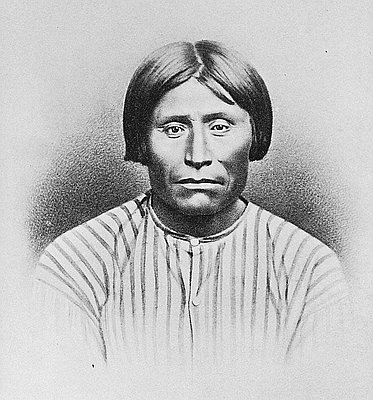Water wheels powered the first lumber mills in the Upper Klamath Basin. Those were one-man operations that some of the earliest settlers used. It took them hours to turn a log into planks.
To build Fort Klamath, the U.S. Army brought a steam-driven mill across the Cascades from Jacksonville. It operated from 1863 to 1870 and turned out up to 3,000 board feet per day.
The Treaty of 1864 promised “one saw-mill. . . and all the necessary tools and materials for the saw-mill” for the use of the Klamath Tribes. In 1870, the Klamath Agency built a mill that produced boards until it burned down in 1911.
In 1877 William Moore built a mill on the Link River that was able to produce 10,000 board feet per day. Thirty years later his sons opened a mill on the shore of Lake Ewauna, between the Link and the Klamath rivers, that turned out 50,000 board feet daily. But the harvest of logs had hardly begun. The timber industry in Klamath County took off after 1909 when the Southern Pacific Railroad line came to Klamath Falls.
As the fruit industry in California expanded, ponderosa pine was increasingly in demand to make boxes. The Ewauna Box Company, which started work in 1912, became the second largest box factory in the United States.
In 1929, the Weyerhaeuser Timber Company built a huge modern timber mill near Klamath Falls. To start the day’s work, the boss shouted, “Pull the plug,” a worker did so, water flowed in, and the machinery began to operate.
Its location by the tracks enabled the Weyerhaeuser mill to run year-round. Other mills like the Collier outfit on Swan Lake had to shut down each winter. Its horses were unable to haul lumber through the snow to the railroad to get the product to market.
A migratory workforce of about thirty “bindlestiffs,” so named for the blanketrolls, or “bindles,” they carried from job to job, found employment at the Collier mill. Mornings before going to the forest, the lumberjacks warmed themselves at the fire in the cookhouse and ate huge quantities of food.
Getting logs to the millhouse was hard work. Men chopped down each tree with an axe, used cross-cut saws to cut it into logs, and tied the logs to horses or oxen that dragged them to the mill.
© Stephen Most, 2003. Updated by OHP staff, 2014.









